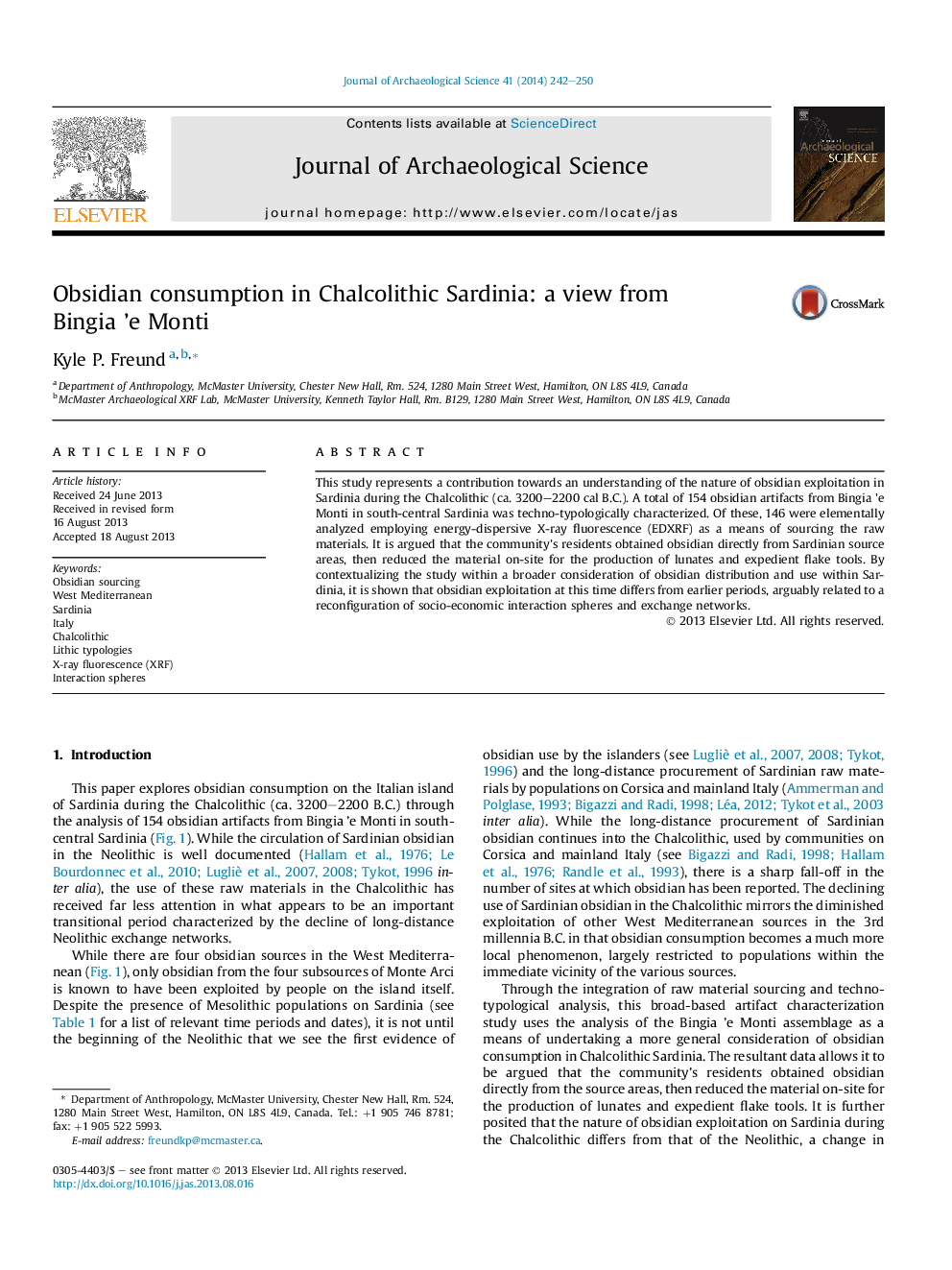| Article ID | Journal | Published Year | Pages | File Type |
|---|---|---|---|---|
| 7443769 | Journal of Archaeological Science | 2014 | 9 Pages |
Abstract
This study represents a contribution towards an understanding of the nature of obsidian exploitation in Sardinia during the Chalcolithic (ca. 3200-2200Â cal B.C.). A total of 154 obsidian artifacts from Bingia 'e Monti in south-central Sardinia was techno-typologically characterized. Of these, 146 were elementally analyzed employing energy-dispersive X-ray fluorescence (EDXRF) as a means of sourcing the raw materials. It is argued that the community's residents obtained obsidian directly from Sardinian source areas, then reduced the material on-site for the production of lunates and expedient flake tools. By contextualizing the study within a broader consideration of obsidian distribution and use within Sardinia, it is shown that obsidian exploitation at this time differs from earlier periods, arguably related to a reconfiguration of socio-economic interaction spheres and exchange networks.
Related Topics
Physical Sciences and Engineering
Materials Science
Materials Science (General)
Authors
Kyle P. Freund,
